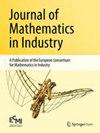检测人群运动中的自组织模式:优化算法的影响
IF 1.7
Q3 MATHEMATICS, INTERDISCIPLINARY APPLICATIONS
引用次数: 0
摘要
不断升级的城市化进程引发了人们对拥挤事件的担忧,因此有必要深入了解大型人群的行为,并制定有效的人群管理策略。本研究采用计算方法分析现实世界中的人群行为,强调自组织模式。值得注意的是,两股人流的交汇引发了条纹图案的自发出现,这在模拟和真人实验中都得到了验证。针对研究这些模式的计算方法的不足,之前的研究利用了模式匹配技术,采用奈尔德-梅德简约算法将二维正弦函数拟合到行人坐标上。本文引入模拟退火作为优化算法,并采用二维方波进行数据拟合,从而推进了模式匹配程序。模拟退火和方波的结合大大提高了模式匹配的质量,这一点通过统计假设检验得到了验证。研究最后概述了该方法在不同场景中的潜在应用。本文章由计算机程序翻译,如有差异,请以英文原文为准。
Detecting self-organising patterns in crowd motion: effect of optimisation algorithms
The escalating process of urbanization has raised concerns about incidents arising from overcrowding, necessitating a deep understanding of large human crowd behavior and the development of effective crowd management strategies. This study employs computational methods to analyze real-world crowd behaviors, emphasizing self-organizing patterns. Notably, the intersection of two streams of individuals triggers the spontaneous emergence of striped patterns, validated through both simulations and live human experiments. Addressing a gap in computational methods for studying these patterns, previous research utilized the pattern-matching technique, employing the Nelder-Mead Simplex algorithm for fitting a two-dimensional sinusoidal function to pedestrian coordinates. This paper advances the pattern-matching procedure by introducing Simulated Annealing as the optimization algorithm and employing a two-dimensional square wave for data fitting. The amalgamation of Simulated Annealing and the square wave significantly enhances pattern fitting quality, validated through statistical hypothesis tests. The study concludes by outlining potential applications of this method across diverse scenarios.
求助全文
通过发布文献求助,成功后即可免费获取论文全文。
去求助
来源期刊

Journal of Mathematics in Industry
MATHEMATICS, INTERDISCIPLINARY APPLICATIONS-
CiteScore
5.00
自引率
0.00%
发文量
12
审稿时长
13 weeks
 求助内容:
求助内容: 应助结果提醒方式:
应助结果提醒方式:


